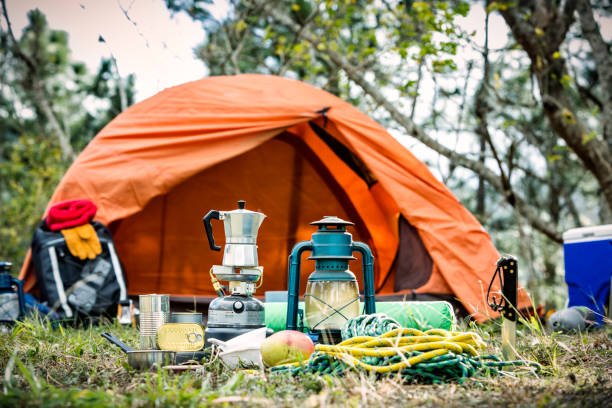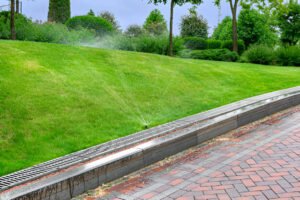Dry camping, also known as boondocking, is a form of camping that involves staying in an RV or tent without access to traditional campground amenities such as water, electricity, or sewer connections. It’s a popular choice for outdoor enthusiasts seeking a more primitive and self-sufficient camping experience.
Dry camping allows you to explore remote and untouched wilderness areas, escape the crowds, and immerse yourself in nature’s tranquility. In this comprehensive guide, we’ll delve into the essential aspects of dry camping, covering everything from preparation to best practices and tips for an unforgettable adventure.
What Is Dry Camping
Dry camping, at its core, is about embracing a minimalist approach to camping. Unlike traditional campgrounds, where you have access to hookups and facilities, dry camping requires you to be self-reliant and carry all the necessary supplies with you. This type of camping is prevalent among RV enthusiasts, van-lifers, and tent campers who seek solitude and a more authentic outdoor experience.
Benefits of Dry Camping
- Immersion in Nature: Dry camping allows you to camp in remote and pristine locations, far away from the hustle and bustle of crowded campgrounds.
- Cost-effective: Without the need for hookups, dry camping is often more affordable, or even free, depending on the location.
- Solitude and Tranquility: With fewer campers around, you can enjoy a peaceful and serene environment, perfect for relaxation and reconnecting with nature.
- Adventure and Exploration: Dry camping allows one to explore off-the-beaten-path destinations and discover hidden gems.
Preparation for Dry Camping
Before embarking on a dry camping adventure, proper preparation is crucial. Here are some essential steps to ensure a comfortable and enjoyable experience:
Choosing the Right Vehicle or Tent
- RVs and Motorhomes: Look for RVs or motorhomes with large holding tanks for freshwater, greywater, and blackwater, as well as efficient power systems (solar panels, generators, or batteries).
- Truck Campers and Vans: Truck campers and converted vans offer a compact and maneuverable solution for dry camping, but may have limited storage and tank capacities.
- Tents: For tent campers, consider investing in a lightweight and durable tent, along with a comfortable sleeping pad and warm sleeping bag.
Water Management
Water is a precious resource when dry camping, so it’s essential to plan:
- Freshwater Storage: Ensure your RV or vehicle has adequate freshwater tank capacity or bring collapsible water containers.
- Water Conservation: Practice water-saving techniques, such as using biodegradable soap and limiting showers.
- Water Purification: Consider packing a portable water filter or purification tablets for sourcing water from natural sources (if permitted).
Power Management
Without access to electrical hookups, you’ll need to manage your power consumption effectively:
- Solar Panels: Install solar panels on your RV or use portable solar chargers for recharging batteries and devices.
- Generators: Carry a quiet and fuel-efficient generator for charging batteries and running essential appliances.
- Battery Bank: Invest in a robust battery bank or deep-cycle batteries to store solar or generator-generated power.
- Energy-efficient Appliances: Opt for energy-efficient appliances and LED lighting to reduce power consumption.
Waste Management
Proper waste management is crucial when dry camping to protect the environment and maintain sanitary conditions:
- Holding Tanks: Ensure your RV’s holding tanks (black and gray) are large enough for your trip duration and empty them responsibly at designated dump stations.
- Portable Toilets: For tent campers, consider using a portable toilet or practicing leave-no-trace principles.
- Trash Disposal: Pack out all trash and dispose of it properly at designated facilities.
Best Practices for Dry Camping
To make the most of your dry camping experience, follow these best practices:
- Research and Plan: Study your intended camping location, check for any restrictions or permits required, and plan your route accordingly.
- Leave No Trace: Practice the principles of Leave No Trace, such as minimizing your impact on the environment and respecting wildlife.
- Conserve Resources: Be mindful of your water, power, and waste management, and conserve resources whenever possible.
- Stay Safe: Familiarize yourself with the area, be aware of potential hazards (weather, wildlife, terrain), and have emergency supplies on hand.
- Respect Others: If camping near others, be considerate of noise levels and keep a safe distance to maintain privacy and solitude.

Dry Camping Destinations and Resources
With the rise in popularity of dry camping, there are numerous resources and destinations available to help you plan your adventure:
- Bureau of Land Management (BLM) Lands: The BLM manages vast public lands across the United States, offering numerous dry camping opportunities.
- National Forests: Many national forests allow dispersed camping, including dry camping, in designated areas.
- Websites and Apps: Utilize websites like Freecampsites.net, iOverlander, and Campendium, as well as apps like FreeRoam and The Dyrt, to find and review dry camping locations.
- Guidebooks and Maps: Invest in guidebooks and topographic maps specific to the area you plan to explore for detailed information on camping spots and regulations.
Dry Camping Tips and Tricks
To enhance your dry camping experience, consider these helpful tips and tricks:
- Conserve Battery Power: Invest in energy-efficient appliances, use LED lighting, and limit the use of power-hungry devices.
- Meal Planning: Plan and prepare meals that require minimal water and cooking time, such as dehydrated or no-cook options.
- Shade and Ventilation: Position your RV or tent for optimal shade and cross-ventilation to reduce the need for air conditioning or heating.
- Portable Gear: Bring along portable gear like solar showers, camp chairs, and outdoor cooking equipment to maximize comfort and convenience.
- Campsite Selection: Choose a level, well-drained campsite away from potential hazards like dead trees or areas prone to flooding.

FAQs About Dry Camping
1. Is dry camping legal?
Dry camping is generally legal on public lands managed by agencies like the Bureau of Land Management (BLM) and the U.S. Forest Service, as long as you follow the designated rules and regulations. However, it’s essential to check local laws and restrictions before dry camping in a particular area.
2. How long can you dry camp?
The duration of your dry camping trip depends on the capacity of your freshwater tanks, holding tanks (for RVs), and your overall resource management. Most RVers can comfortably dry camp for several days to a week or more before needing to replenish supplies or dump waste.
3. Can you run a generator while dry camping?
Running a generator while dry camping is generally allowed, but many areas have specific noise regulations or designated quiet hours. It’s essential to be considerate of other campers and minimize generator usage as much as possible. Opting for solar panels or battery banks can reduce the need for generators.
4. Is it safe to dry camp alone?
Dry camping alone can be safe if you take proper precautions, such as letting someone know your itinerary, having emergency supplies on hand, and being aware of potential hazards. However, it’s generally safer to dry camp with a partner or group, especially in remote locations.
5. Can you have a campfire while dry camping?
Campfires are often permitted while dry camping, but regulations vary depending on the location and current fire restrictions. Always check with local authorities and follow all fire safety guidelines, such as having a designated fire pit and ensuring your fire is completely extinguished before leaving.
6. How do you find water sources for dry camping?
When dry camping, you can source water from various locations, such as natural springs, streams, or lakes (if permitted and properly treated). However, it’s essential to carry enough fresh water for your trip’s duration and use water-saving techniques to conserve your supply.
7. Do you need special permits for dry camping?
In some areas, you may need to obtain a permit or pay a fee for dry camping, particularly on public lands managed by agencies like the BLM or the U.S. Forest Service. Always check the specific regulations for the area you plan to visit and obtain any necessary permits before your trip.
8. Can you dry camp in a tent or car?
Yes, dry camping is not exclusive to RVs or motorhomes. Many tent campers and car campers also enjoy the freedom and adventure of dry camping. However, it’s essential to have the appropriate gear and supplies for your chosen camping style, such as a durable tent, sleeping bags, and portable camping equipment.
My Closing Words
Dry camping, or boondocking, offers a unique and rewarding camping experience for those seeking solitude, adventure, and a closer connection with nature. By preparing adequately, practicing responsible camping techniques, and embracing a self-sufficient mindset, you can embark on unforgettable journeys to remote and untouched wilderness areas.
Whether you’re an experienced RVer or a first-time tent camper, dry camping opens up a world of possibilities for exploring the great outdoors on your terms. So, pack your gear, plan your route, and get ready to embrace the freedom and serenity of dry camping in the heart of nature’s majesty.













